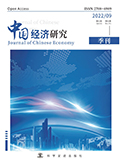

《“健康中国2030”规划纲要》提出构建健康服务体系完善、居民体质健康水平持续提升的大健康社会, 把健康人力资本提升至与教育人力资本同等重要的地位。本文利用2007—2020年中国271个地级市面板数据构建固定效应模型, 对公共预防体系稳定经济增长的作用机制展开实证分析。研究发现, 公共预防体系影响经济增长的途径有三: 一是用于公共预防体系建设的财政投入, 将直接转化为总需求, 进而推动经济增长; 二是通过增进公众体质健康, 提升个体健康人力资本水平和消费支出能力, 进而推动经济增长; 三是通过稳定社会秩序和经济预期, 减少宏观经济波动, 进而推动经济增长。异质性检验表明, 因政策重视、教育投入和环境保护等方面的差异, 公共预防体系的经济增长作用存在较大的地区差异, 中部和东北地区要明显弱于西部和东部地区。依据各地经济社会发展状况, 统筹协调财力、物力和人力资源, 按照医防兼顾的理念, 构建现代公共预防体系, 为公众健康、社会稳定和经济发展保驾护航是全面实现小康、建设大健康社会的内在要求。
The Outline of the “Healthy China 2030” Plan proposes to build a big healthy society by perfecting health service system and continuous improving residents’ physical health, and it advocates to promote health human capital to the same importance to education human capital. Based on the panel data of 271 prefecture level cities in China from 2007 to 2020, this paper constructs a fixed effect model to empirically analyze the mechanism of the public prevention system to reduce macroeconomic fluctuations and promote economic growth. The research shows that there are three channels for the public prevention system to stabilize economic growth: 1) Financial input for construction directly expands aggregate demand and promotes economic growth. 2) Improved overall public health facilitates the accumulation of human capital and promote intensive economic growth. 3) Stabilized social order and economic expectations reduces macroeconomic fluctuations and therefore drives economic development. The heterogeneity test shows that due to the regional differences in policy attention, education investment and environmental protection, the role of public prevention system in promoting economic growth in the central and northeast regions is significantly weaker than it is in the western and eastern regions.